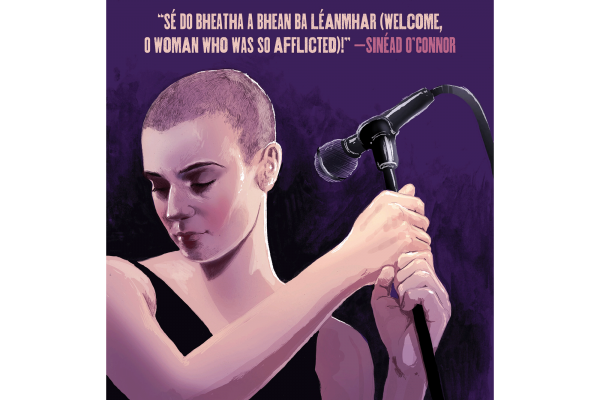In October, Mark Zuckerberg announced a rebrand of the social media network formerly known as Facebook. The new name, “Meta,” is not only an attempt at rebranding but also an effort to expand the horizons of the social media network. A major way Meta hopes to do this is through its forthcoming flagship technology: the “metaverse.” Through the use of high-tech virtual reality, the metaverse aims to bring social media to life by creating digital spaces and avatars that blur the line between flesh and pixel.
Zuckerberg’s presentation makes clear the intent of the metaverse: It is designed to be an all-encompassing simulated reality. The presentation felt eerie, as though I was watching Black Mirror. There’s something uncanny about building a virtual home and inviting guests over for board games and drinks. Stranger still, within the metaverse, you can go on “do not disturb” mode and slip away, for example, to a virtual Malibu mansion. All of this, Zuckerberg claims, will allow us the time to do the things that matter. Zuckerberg's prediction that the future of social media must orient itself around immersive virtual reality is his most ambitious prophecy yet. For Meta, this is a future worth investing billions upon billions into.
The term “metaverse” is well known in Silicon Valley. It was first introduced by science fiction writer Neal Stephenson in his 1992 novel, Snow Crash. Yet, unlike Zuckerberg’s prophecy, Stephenson’s depiction of the metaverse does not heal or solve the problems of the novel’s society. Instead, Stephenson’s metaverse is a dystopia of class hierarchy. The facade of equality quickly disintegrates as avatars begin classifying one another based on the image resolution of their avatars, resulting in a (virtual) social hierarchy. In a similar way, I believe the virtual utopia that Zuckerberg’s metaverse offers will not lead to community or belonging, but rather it will exacerbate our social depravity by making participants less human.
The only sure promise of the metaverse is disembodiment.
The incarnation of Jesus affirms that Christian faith is deeply embodied. Jesus feasted, wept, laughed, conversed, and taught in the fullness of his humanity and relationships with those around him. As God enfleshed, Jesus expanded the imaginative boundaries of those who followed him. Jew and Gentile, clean and unclean, rich and poor — all were gathered around the person of Jesus. The sacraments, too, further proclaim to us that the ordinary things of life — bread, water, wine — unite the physical to the spiritual. Jesus, in all his ministry, offers an invitation to spiritual and imaginative expansion.
Simulated reality, however, deprives us of the full, robust context of human relationships. As CEO of Whiteboard Taylor Jones told me recently, social media is fundamentally designed to compress us — our personalities, conversations, beliefs, and ideas — into a single profile. Because of this, technological aspirations like the metaverse, while promising to unleash the capabilities of connection, will never lead to closer, more meaningful human interaction. Atlantic staff writer Caitlin Flanagan writes, “twenty years of journalism taught me to hit a word count almost without checking the numbers at the bottom of the screen. But now a corporation that operates against my best interests has me thinking in 280 characters. Every thought, every experience, seems to be reducible to this haiku, and my mind is instantly engaged by the challenge of concision.” From Twitter to Facebook and all social media platforms in between, compression, not expansion, is the goal.
Although it is hard to imagine a world without Facebook, we must look critically at the implications of its widespread use and the powerful companies that control these platforms — and us. Whether by making election interference easier, selling people’s data, fostering social division by populating feeds with malice, greed, and dissension, social media provides an opportune venue for users to live into our depraved human condition. The consequences of this, however, are not contained in the digital world.
Last month, former Facebook employee Frances Haugen stated before Congress that the social media company prioritized growth over internet safety and data privacy, ultimately leading to “more division, more harm, more lies, more threats and more combat.” For young users in particular, Facebook’s growth-focused algorithms have directly led to suicidal thoughts and body insecurity among adolescents — a dangerous effect the social media company knew about, but downplayed to the public. Consequently, social media is causing us to be less empathetic people — people who refuse to see the plight of our neighbors or do anything to change it. Social media encourages us to see ourselves and others as handles, data to be mined for ad revenue, and out-of-context quotes.
In Stephenson’s Snow Crash, this type of formation is likened to becoming a “gargoyle,” or those who are constantly plugged into the simulated reality of the metaverse. “Gargoyles are no fun to talk to,” Stephenson writes. “They never finish a sentence. They are adrift in a laser-drawn world.” The gargoyles in Snow Crash remind us that submersion in social media will only further alienate us from ourselves and others — extracting us from our bodies, and looking away from our neighbors in need. We become frozen in digital stone — able to see the world through concrete eyes but unable to authentically participate in it.
Where, then, does that leave us and the metaverse? More broadly: Where does this leave us in relation to social media and the internet?
I believe there are still great redemptive possibilities for the internet. Rather than a location of division, social media and digital spaces have the potential to become hospitable spaces of constructive change where ideas are shared and marginalized communities make their voices heard.
Commenting on the internet and social media, author and staff writer for The New Yorker Jia Tolentino writes that the internet can distend our sense of identity and foster a false sense of militant opposition directed at people and causes. Yet, Tolentino also recognizes that the internet and social media can act as a great equalizer, offering a medium for people who have been ignored or marginalized because of their race, sex, or gender to share their perspectives. In this way, social media is used for its original design: a tool for human connectivity.
As a tool, social media can be a catalyst for democracy, equality, and cooperation. Community organizers and marginalized voices can use the internet to share ideas, gather people together, and make lasting change in the physical world. For the #BlackLivesMatter movement, social media has proven crucial for organizing and raising awareness. In a global pandemic, social media has provided a medium for connection. Examples like these demonstrate that we can use social media to promote belief over cynicism, charity over hostility, and generosity over greed.
But the divisions in our world cannot be repaired through virtual or simulated reality. Immersion in virtual worlds will not help us be better humans or better Christians. It will only disembody us, slowly hardening us into stone. Instead, we must use social media for the advancement of democracy and cooperation that materializes in the real, unpixelated world. Additionally, we need social media companies to prioritize the health and safety of their users over monetary gain. Even more, we need systems in place to hold these global empires accountable for the devastating consequences of their actions and policies.
The redemptive and empathic possibilities of the internet ultimately are not found on our screens, but rather in our physical bodies and relationships with one another through tangible actions of seeking justice, acting mercifully, practicing compassion, and loving both our neighbors and our enemies.
Got something to say about what you're reading? We value your feedback!







